1. Basic concepts
- Basic concepts
- Class: The abstraction of objects of the same type, such as people, planets, cars, etc.
- Object: A specific instance of a class containing properties and methods such as a person, a planet, a vehicle, and so on
- Attributes: Used to describe certain characteristics of an object, such as a person's age, name, etc.
- Method: Used to describe certain functions of the object, such as people eating, learning, etc.
- The file ends with.scala
- Main program entry: def main(args: Array[String]): Unit {}
- identifier
- Compatible with java identifier naming conventions
- Great hump by class name, small hump by variable name
- The keyword yield has been added, so use the yield method with inverted quotes such as Thread.yield
- Keyword
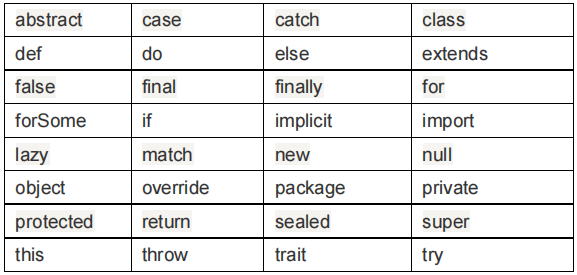

- Notes
- Compatible with java annotations and supports the nested structure of annotations
- Line Break
- You can use the end of a semicolon or the end of a carriage return. Note that multiple commands must be separated by semicolons
- Introducing packages
- Introduce a single class: import java.util.Date;
- Introduce all classes under the package: import java.util.;
- Introduce several classes (selectors) under the package: import java.util.{Date,HashSet,HashMap}
- Rename after class introduction: import java.util. {Date => OldDate}
- Hide some members under the package: import java.util. {Date=>,}
- The default package imports are: java.lang., scala., Predef.. No package name is required for the use of the inner class of the default introduced package.
2. Data type
Note: All data is objects and there is no basic data type
- Any: parent of all classes
- AnyRef: Base class for all reference classes
- AnyVal: Base class for all value types
- Nothing: A subclass of all classes
- Null: null reference
- Unit: Null value, just like void in java
- Nine Value Types (AnyVal)
- Integer type
- Byte
- Short
- Int
- Long
- float
- Float
- Double
- Character
- Char
- Boolean
- Boolean
- empty
- Unit
- Integer type
- Data Type Diagram
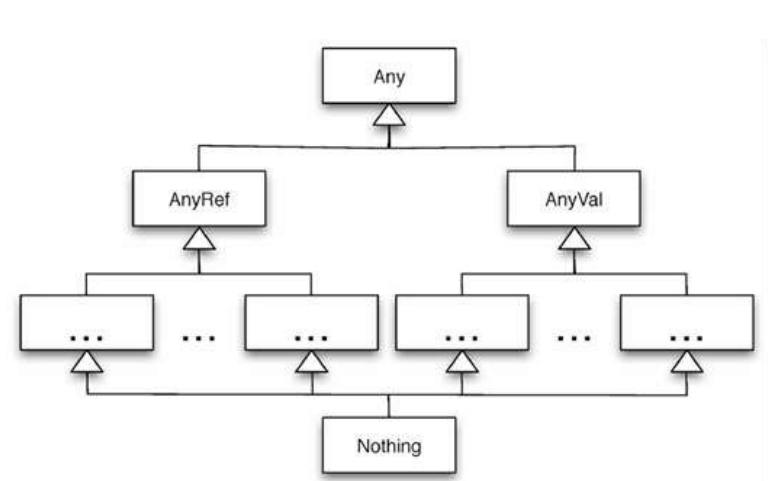
3. Constants and variables
constant
Definition: A quantity that does not change during the course of a program is called a constant
Usage: Declare constants with val ue
variable
Definition: The amount of change that occurs during a program is called a variable
How to use: Use var to declare variables
Explicit declaration
var name:String = "mizui" //Formula var or value variable name: variable type = value
Implicit declaration
var name = "mizui" //Formula var or value variable name = value //scala supports type inference, so it's convenient to write this
4. Access modifiers
- Type:
- private
- protected
- public
- Differences from java:
- The default access modifier is missing here
- The default modifier for scala's object is public
- private
- Visible only inside the class
- Note: In the case of nesting, the outer class cannot even access the private members of the inner class
- protected
- Stricter than java, accessible only to subclasses, inaccessible under the same package
- public
- Same as java
- Scope Protection Mechanism
- private[x], that is, "This member is private to all classes except the classes in [...] or the classes in [...] packages and their associated objects.
- protected[x], that is, "This member is protected against all classes except the classes in [...] or the classes in [...] packages and their associated objects.
5. Operators
Include operator in 5
Arithmetic Operators
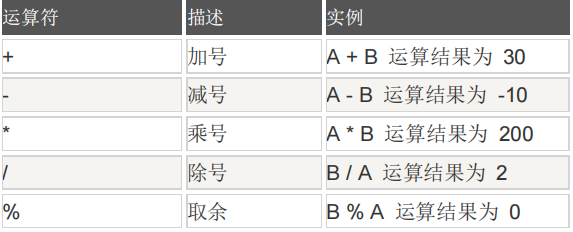
Relational Operators
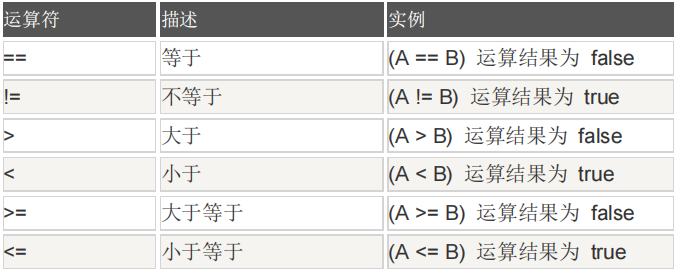
Logical operators

Bitwise Operators
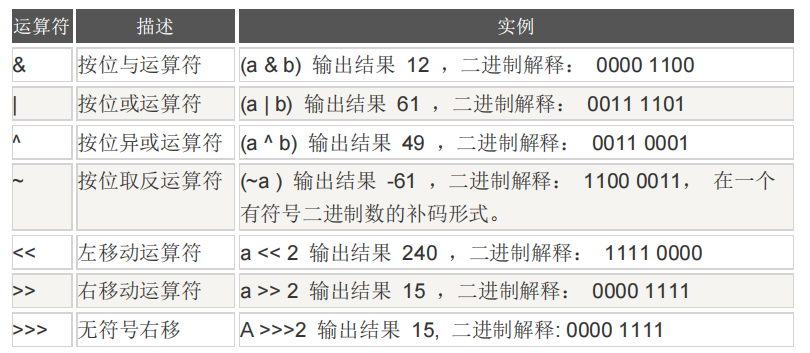
Assignment Operators
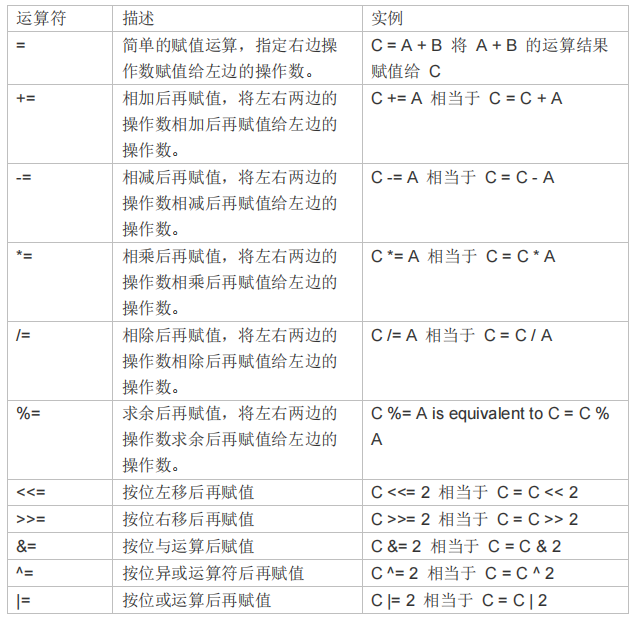
Operator Priority
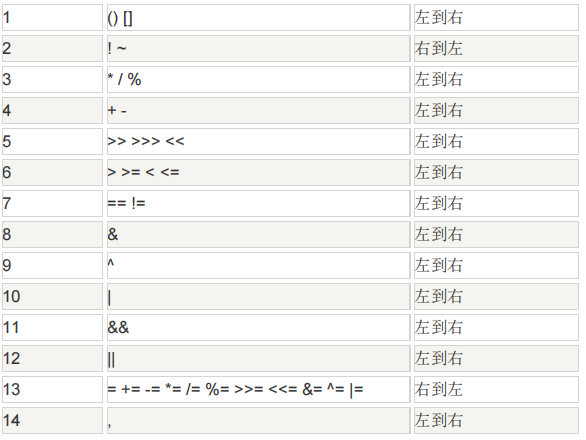
6. Control statements
- if ... else ...
- Same as java
- loop
- while
- Same as java
- do ... while
- Same as java
- while
- for
//Simple traversal for(i <- 0 to 10) println(i) //Output results are 0-10 //until keyword for(i <- 0 until 10) println(i) //Output results are 0-9 //by keyword for(i <- 0 to 10 by 2) println(i) //Output results 0,2,4,6,8,10 //Conditional Output for(i <- 0 to 10 if(i%2==0)) println(i) //Output results: 0,2,4,68,10 //Traversing a list of chains var list = List(1,2,3) for(x <- list) println(x) //Output results: 1,2,3 //yeild keyword var list2 = for(x <- list if(x%2==0)) yeild x //The result is assigned to list2
7. Functions
scala's function is an object that can be passed as a parameter or return value
Define using val and def
Definition of function
Define Format
def functionName ([parameter list]) : [return type] = {
function body
return [expr]
}- Relevant Instructions
- If the equals sign and method body are not written, the method is implicitly declared as an abstract method, and the type containing it is then an abstract type.
- The return type can be any valid Cala data type, and if the function does not return a value, it can be returned as Unit, which is a Java-like void
- call
- Same as java
- Advanced programming for functions (see: Advanced programming for scala-valued functions)
- Call by Name
- Specify parameter name call
- Parameter Default
- Variable length parameter
- Recursive function
- Higher order function
- Nested Function
- Anonymous function
- Partial Application Function
- currying
8. Closure
concept
Closure is a function
The function calls an external variable during execution
Example
object TestCloseFunction {
var factor = 1000
def salaryMoney(i: Int): Int = {
return i * factor
}
def main(args: Array[String]) {
println("A monthly salary salaryMoney(8) value = " + salaryMoney(8))
println("A monthly salary salaryMoney(10) value = " + salaryMoney(10))
TestCloseFunction.factor = 10000;
println("Annual salary salaryMoney(8) value = " + salaryMoney(8))
println("Annual salary salaryMoney(10) value = " + salaryMoney(10))
}
}9. Strings
concept
Completely peer to java.lang.String
Variable String
var str = "hello"
Invariant String Builder
var str = new StringBuilder
Common Functions
Get String Length
length()
String Connection
+ Or concat
String formatting, similar to c
printf()
10. Arrays
concept
A sequential storage structure for storing elements of the same type
Use
Static Array
def main(args: Array[String]): Unit = {
var programLanguageArray = Array("java", "python", "c++", "c", "php")
for (program <- programLanguageArray) {
println(program);
}
}Dynamic Array
def main(args: Array[String]): Unit = {
var programLanguageArray = new Array[String](5)
// var programLanguageArray:Array[String] = new Array[String](5)
programLanguageArray(0) = "java";
programLanguageArray(1) = "python";
programLanguageArray(2) = "c++";
programLanguageArray(3) = "c";
programLanguageArray(4) = "php";
for (program <- programLanguageArray) {
println(program);
}
}
Multidimensional Array
//This package needs to be introduced manually import Array.ofDim; //Create a 4x4 matrix var myMatrix = ofDim[Int](4, 4)